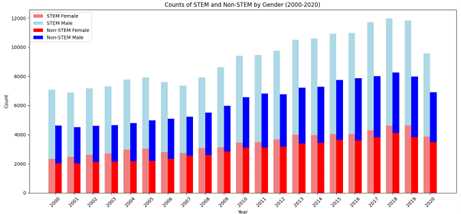
Women in innovation expanding the invention archives of the UK
Pioneering research led by female researchers at the Manchester Institute of Innovation Research has commenced with the goal of creating a database highlighting the contributions of UK’s PhD graduates towards scientific, social, and economic progress. The UK Doctoral Graduates’ Contribution to Innovation (UK DGCI) project led by Prof. Cornelia Lawson and Dr Xin Deng, is co-funded by the Innovation & Research Caucus (IRC) as well as the Alliance Manchester Business School (AMBS). The project is part of the extended European wide consortia DOC-TRACK, led by Catalina Martinez and funded by the European Patent Office (EPO). The research team working together to solve this challenge also includes Dr Liangping Ding, An Yu Chen, Seunghyun Lee, Tiantian Shen, Bahaar Dahiya, and Sanya Panda.
Using the DOC-TRACK methodology, the UK DGCI team has the goal of building a robust database of UK graduates in Science, Technology, Engineering, Mathematics, and Medicine (STEM-M). The project is led by an all-female team dedicated to bridge the gap in the evidence base and enhance our understanding of doctoral graduates as an important channel of knowledge transfer from science to industry. This project also plays a key role in helping government bodies to support socio-economic development.
One of the project’s key objectives is to investigate concepts such as the ‘leaky pipeline’, which refers to the significant reduction in the number of women especially in STEM fields at various stages of their education and career paths. The UK DGCI project will be able to identify trends related to the leaky pipeline and inform UK Research and Innovation (UKRI) and the EPO to develop research and innovation funding strategies focused on eradicating gender biases in science and innovation.

Figure 1. STEM and non-STEM gender distribution
Early trend analysis reveals significant gender disparities in STEM disciplines by examining the distribution of males and females in STEM and non-STEM fields from 2000 to 2020. As shown in Figure 1, males (light blue) have consistently been more represented than females (pink) in STEM fields, with the gap widening over time, which indicates a persistent gender imbalance. In contrast, non-STEM fields show a relatively equal distribution of males (blue) and females (red), suggesting greater gender parity outside of STEM disciplines. Further analysis into specific subjects highlights distinct trends. While women are increasingly leading in fields such as medicine, health, agriculture, veterinary, and biological sciences, the female-to-male ratio drops drastically in areas such as physical sciences, mathematics, statistics, engineering, technology, and computer science-related fields. Additionally, women researchers significantly outnumber men in fields such as creative arts and design, education, language and literature, as well as librarianship and information science.
Find out what drives the UK DGCI research team and learn about the wide-reaching impacts of this project through the following video: https://www.youtube.com/watch?v=k_HfVi6tmIk

0 Comments